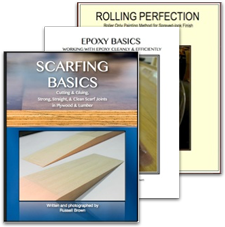Proof positive that it can be done, an unexpected event due to climate change/drought, and in the "About those rights" department...
Way back when I used to work in a boatyard for an hourly wage, I mainly did two jobs. Fixing leaky decks and sorting out mast step issues where deck stepped masts were concerned.
The leaking decks were hard on my knees and back, but fairly simple. Deck stepped mast problems were a whole other thing entirely.
The usual problem ran something like this: the compression post was not supporting the deck/mast. Compressive forces induced by the rigging would push the deck down at the mast step. Which would cause the rigging to go slack.
With me so far?
Then the owner or rigger would tighten the rig, which caused more damage to the deck, compression post and compression post step, which would then result in more rig tuning. This, of course, would induce more pressure on the mast, step, deck compression post and compression post step.
Which puts us pretty deep in FUBAR territory.
Now you have a deck reverse curvature, a compression post step failure, or a buckled compression post. In a worst-case scenario, the mast would simply pop a hole in the deck or hull. Other issues were various forces on interior structure that could cause many and varied construction failures as the mast/rigging matrix is now tearing your boat apart.
It’s actually pretty amazing just how much damage (spelled t-o-t-a-l — l-o-s-s) can occur by simply over-tightening the rig.
Actually, like most sailboat problems, the fix is fairly simple if caught early and addressed promptly. Of course, check all the parts of your rig regularly, including not just the rigging but the mast step, compression post, the compression post step and the deck in and around the mast.
Most classic plastics are old enough that parts of the compression post assembly are way past their sell-by date. For instance, on our CAL 34, the first repair/upgrade I made was to replace the compression post and the beam it stepped on. The downside was to remove the old I-beam and replace with a new one. I also had to drop the mast and remove and replace the adjacent bulkhead.
There is a pretty good video, on just such a problem that you might want to check out.
While I’m pretty sure I’d approach the repair somewhat differently than they do. I’ll just say they are on the right track, though they’d make their lives a lot simpler by dropping the mast to facilitate their fix.
Listening to something from the I need to listen to more Ska files
So it goes...















